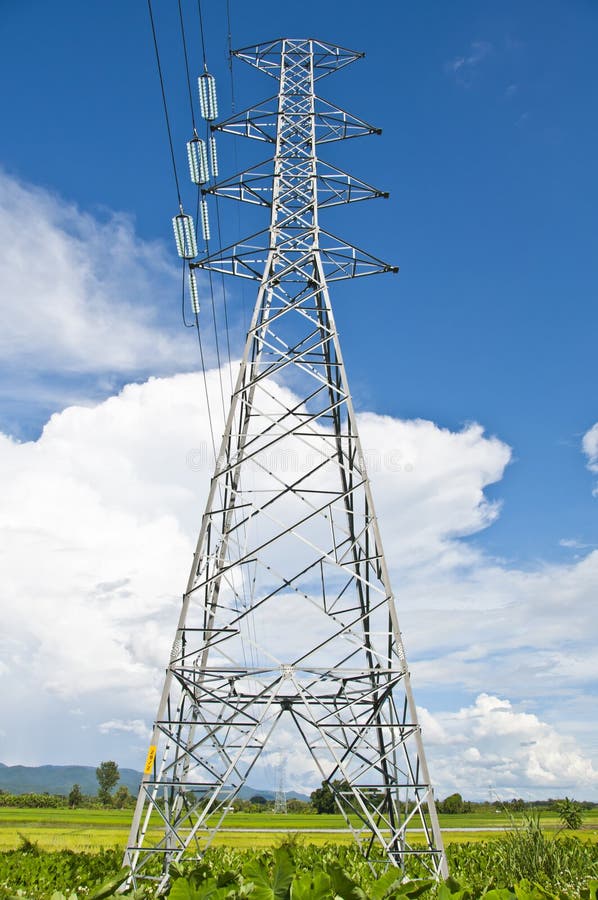
Power Transmission Towers for Extra and Ultra High Voltage Transmission lines
Geometries of power lines To calculate the field from a power line, you need to know the geometry of the conductors. On this page we provide the necessary details for some standard UK power lines.

Free Images fence, wind, power line, mast, electricity, energy, transmission tower, kazakhstan
We are the creators of the industry standard line design programs PLS-CADD, PLS-POLE and TOWER. Power Line Systems was founded in 1984 to provide consulting services and develop engineering software for the structural and geometric design of electric power lines.

Khalil Ali's Multimedia and Design Blog Eiffel Tower Power Lines
overhead power line is a structure used in electric power transmission to transmit electrical energy along large distances. It consists of one or more (commonly multiples of three) suspended by towers or poles.

Electric Transmission Powerline Towers 9 Stock Photo Image of powerlines, electricity 73477540
Nov. 27, 2022. A small plane crashed into a transmission tower in Maryland on Sunday, knocking out electricity to tens of thousands of customers as rescuers raced to extricate the two people on.

Khalil Ali's Multimedia and Design Blog Eiffel Tower Power Lines
A transmission tower is a tall structure used to support high-voltage electrical power lines. Transmission towers are usually made of steel and can be freestanding or guyed. The tallest transmission towers in the world are over 2,000 feet tall. Transmission towers are necessary because they help to keep power lines from sagging or touching the.

Free Images overhead power line, transmission tower, electricity, electrical supply, public
Bulk Transmission = High Voltage Lines. The majority of major transmission lines in the U.S. are either 230-kilovolt ( kV) or 500-kV alternating current lines. In some cases, 115-kV lines are used. Lower voltages are far less efficient for moving electricity across hundreds or thousands of miles to where it is needed without losing a.

Tower power line stock image. Image of structure, voltage 57607831
Pylons - also known as electricity transmission and distribution towers - are the structural supports that have carried the UK's network of high-voltage overhead power lines for nearly 100 years. Today there are more than 90,000 transmission and distribution electricity pylons across Britain. How do electricity pylons work?

Free Images sunset, electricity, india, karnataka, transmission tower, electric tower, shimoga
Most of the power lines that we build are 69- kilovolt (kV) or 115-kV lines, and are much smaller than landowners expect. The large lattice towers that often come to mind are rarely used any longer.. Tower; 90 to 150 feet typical height; 160 to 200 feet typical right of way width +/- 400 kV HVDC transmission nominal voltage. Tower;

3 Phase Steel latice Tower Three Phase Power Transmission Tower, 10m, For Electricity
Towers Conductors Substations ROWs (rights-of-way) Access Roads 1. Towers Transmission towers are the most visible component of the bulk power transmission system. Their function is to keep the high-voltage conductors separated from their surroundings and from each other. Higher voltage lines require greater separation.

Wallpaper sunset, dusk, power lines, electricity, transmission tower, energy, afterglow
Overhead power lines are a vital component of the electrical grid infrastructure, enabling the efficient and widespread distribution of electricity across various regions.. The lattice tower consists of two forms. The first one is a pyramidal structure having cross arms extended outside, the second one is a pyramidal base having four support.

Wallpaper sunset, sunrise, evening, Sun, dusk, power lines, electricity, transmission tower
N201RF Mooney M20J 201. December 1, 2022 By AOPA Air Safety Institute staff. UPDATE: The National Transportation Safety Board has released its preliminary report (ERA23LA071) regarding the investigation into the power line tower strike of a Mooney M20J 201 (N201RF). Early Analysis: Mooney M20J Power Line Strike November 27, 2022 Gaithersburg, MD.

Free Stock Photo of Electric Towers with Power Lines in Blue Sky
The transmission towers carry high-voltage transmission line to transport power from the generating station to electrical substations. The electrical substations transport power to the end users through distribution lines. The distribution line uses utility poles to carry the low-voltage conductor.

High voltage power lines, transmission tower, power tower, electricity pylon against blue sky
Transmission line towers are vital structures that support overhead high-voltage power lines and conductors. Many tower designs are utilized for transmission lines depending on voltage, weather conditions, terrain, span length, and cost. The most common types are lattice steel towers, tubular steel poles, concrete supports, and monopoles.

Stock Pictures Power Lines stock photographs
7.7.3 Tower design standard 7-11 7.7.4 Loads on towers 7-13 7.8 Conductor spacing, clearances and transpositions 7-17 7.8.1 Live metal-structure clearances 7-17. The loading of the power transmission line is calculated on the basis of IEC 60826-2 and 3. Special loads will be applied without wind at minimum temperature (broken cables.

Electric power line tower stock photo. Image of generator 21698098
An electric tower or a transmission tower is a tall structure, mostly a steel lattice tower which is used to support the overhead power lines. They carry heavy electrical transmission conductors at a proper height from the ground and these transmission lines must be able to withstand strong wind and snow load. In order to withstand these natural forces, its design must be done considering the.

Highvoltage power transmission towers , Power Lines Stock Photo
What is an overhead power line? Overhead power lines are an integral piece of energy infrastructure. Simply put, their role is to enable efficient and reliable electricity distribution across large distances. They transmit electricity from power plants and generators directly to homes, businesses, and industry.